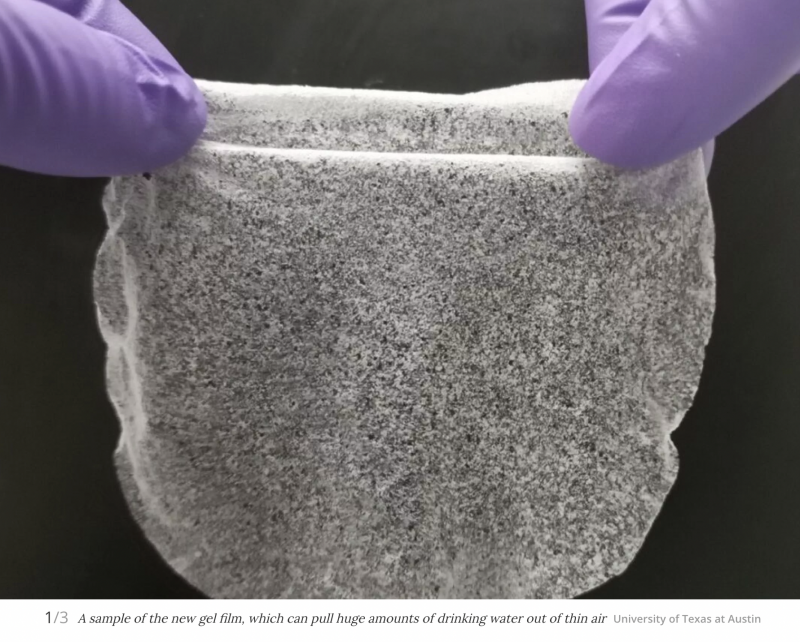Cheap gel film pulls buckets of drinking water per day from thin air
Published on by Water Network Research, Official research team of The Water Network in Technology
A sample of the new gel film, which can pull huge amounts of drinking water out of thin air
University of Texas at Austin 
Water scarcity is a major problem for much of the world’s population, but with the right equipment drinking water can be wrung out of thin air. Researchers at the University of Texas at Austin have now demonstrated a low-cost gel film that can pull many liters of water per day out of even very dry air.
The gel is made up of two main ingredients that are cheap and common – cellulose, which comes from the cell walls of plants, and konjac gum, a widely used food additive. Those two components work together to make a gel film that can absorb water from the air and then release it on demand, without requiring much energy.
First, the porous structure of the gum attracts water to condense out of the air around it. The cellulose meanwhile is designed to respond to a gentle heat by turning hydrophobic, releasing the captured water.
Making the gel is also fairly simple, the team says. The basic ingredients are mixed together then poured into a mold, where it sets in two minutes. After that it’s freeze-dried, then peeled out of the mold and ready to get to work. It can be made into basically any shape needed, and scaled up fairly easily and at low-cost.
The gel film can be cut and molded into whatever shape is needed
The gel film can be cut and molded into whatever shape is neededUniversity of Texas at Austin
In tests, the gel film was able to wring an astonishing amount of water out of the air. At a relative humidity of 30 percent, it could produce 13 L (3.4 gal) of water per day per kilogram of gel, and even when the humidity dropped to just 15 percent – which is low, even for desert air – it could still produce more than 6 L (1.6 gal) a day per kilogram.
That’s a huge improvement over other water harvesters we’ve covered over the years. The highest previously was 8.66 L (2.3 gal), but that was in air with much higher humidity. Others have topped out at 5.87 L (1.55 gal) at 30 percent humidity, or as little as 1.3 L (0.3 gal).
Taxonomy
- Atmospheric Water Generator
- Atmospheric Water Generation
1 Comment
-
How to find out more info on this technology. PLease contact Jodantec@verizon.net. Thanks
1 Comment reply
-
Contact the Authors at the University of Austin, https://www.nature.com/articles/s41467-022-30505-2
-